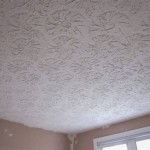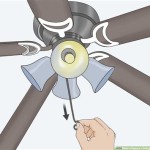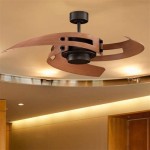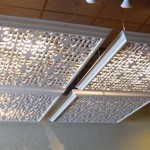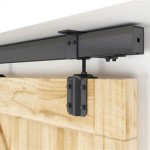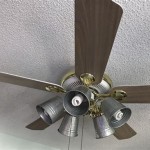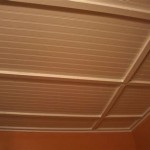What Is a Suspended Ceiling Made Of?
Suspended ceilings, also known as drop ceilings or false ceilings, are a common feature in modern buildings. They offer numerous benefits, including improved aesthetics, better sound insulation, and easier access to utilities. But what exactly are suspended ceilings made of? This article will delve into the materials used in creating these versatile structures, highlighting the key components and their functions.
The Framework: Metal Grids, Aluminum Rails, and T-Bars
The foundation of a suspended ceiling is its sturdy framework, typically constructed from metal components. The most common material used is galvanized steel, chosen for its durability and resistance to corrosion. However, some manufacturers also use aluminum, which is lighter and more aesthetically pleasing. The grid system, composed of interconnected rails and T-bars, is the primary supporting structure, providing a stable platform for the ceiling tiles.
The rails, often called main tees, run along the length of the ceiling and act as the main support beams. They are typically installed parallel to the walls. The T-bars, also known as cross tees, are perpendicular to the rails and create the grid pattern, dividing the ceiling space into smaller squares or rectangles. These bars usually have a “T” shape, with two arms that slide into the rails and a central section that supports the ceiling tiles.
These components are strategically placed and secured to the building's structure using hangers, clips, and screws. The spacing between the rails and T-bars varies depending on the design, but standard measurements ensure proper support and stability for the ceiling.
The Cover: Ceiling Tiles
The visible portion of a suspended ceiling is comprised of ceiling tiles, which come in a wide array of materials, styles, and designs. They cover the framework and provide the desired aesthetic finish. The most common types of ceiling tiles include:
Mineral Fiber Tiles:
Mineral fiber tiles are one of the most widely used materials in suspended ceilings. They are made from a mixture of mineral fibers, such as fiberglass or calcium sulfate, and binders. This combination results in durable, fire-resistant, and acoustically absorbent tiles. Available in a variety of colors and finishes, they offer affordability and versatility.
Gypsum Tiles:
Gypsum is another common ingredient in ceiling tiles. Gypsum tiles are non-combustible, relatively lightweight, and offer good sound absorption. These tiles are often used in areas that require a clean, contemporary aesthetic. They can be painted or textured to match the overall design of the space.
Metal Tiles:
Metal tiles, typically made from aluminum or steel, are known for their durability and resistance to moisture. They are ideal for areas that experience high humidity or are subject to spills and splashes. Metal tiles can have different finishes, including textured, perforated, or embossed patterns, adding visual interest to the ceiling.
Wood Tiles:
Wood tiles, while less common, offer a warm and natural aesthetic. They are often used for architectural accents, creating a unique and sophisticated look. Wood tiles require careful installation and maintenance, as they are susceptible to moisture damage.
The Extras: Insulation, Lighting, and Accessories
Beyond the framework and ceiling tiles, there are several other elements that contribute to the functionality and appearance of a suspended ceiling. These include:
Insulation:
Insulation materials can be installed above the ceiling tiles to enhance thermal and acoustic performance. Common insulation options include fiberglass batts, mineral wool, and foam boards. Insulation helps to regulate temperature, reduce noise transmission, and improve energy efficiency.
Lighting:
Lighting fixtures are typically integrated into the suspended ceiling system. The grid structure provides convenient access for wiring and mounting lights. A variety of light fixtures, including fluorescent, LED, and recessed lighting options, can be incorporated to achieve the desired illumination levels and ambiance.
Accessories:
A range of accessories can be added to enhance the functionality of a suspended ceiling. These may include ventilation grilles, fire sprinkler heads, smoke detectors, and access panels for reaching utilities and building services located above the ceiling.
By understanding the materials used in suspended ceilings, architects, designers, and homeowners can make informed decisions for their specific needs and desired results. Whether seeking improved acoustics, enhanced aesthetics, or easier access to utilities, suspended ceilings offer a practical and versatile solution for various applications.

A Typical Suspended Ceiling Components 13 B Back Bracing Scientific Diagram

What Is A Suspended Ceiling

A Basic Guide To Suspended Ceiling Grids Tiles

What Are Ceiling Tiles Made Of Suspended Materials

What Are Suspended Ceiling Tiles Made From

Suspended Metal Ceilings Sas

A Basic Guide To Suspended Ceiling Grids Tiles

Mineral Fiber Suspended Ceiling Ceilings Armstrong Residential

Suspended Ceiling Grid Diffe Colors White Black Gold Silver Mirroring Tiles Not Included

Whole Market Ceiling Grid Components False Suspended Frame T Bar
Related Posts


